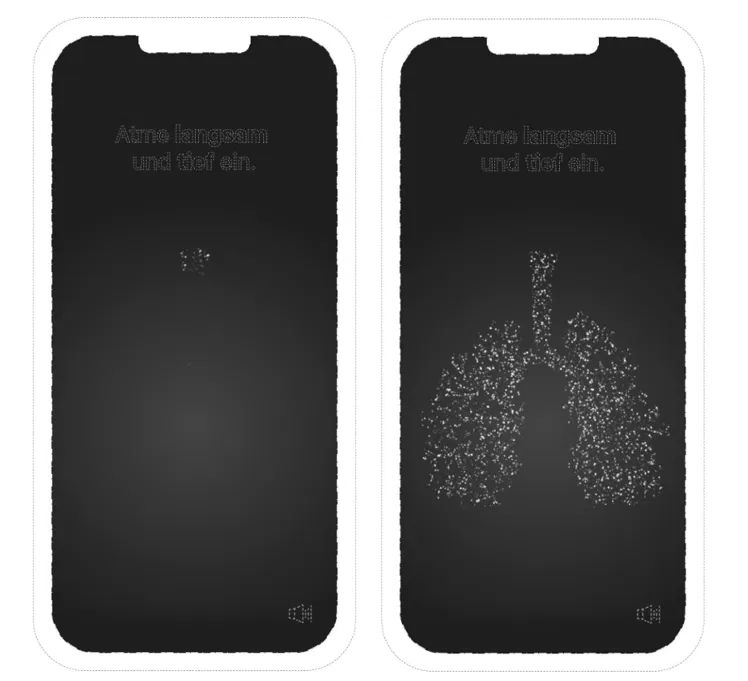In a recent application before the UKIPO concerning a graphical user interface, or a GUI, an objection was raised against the drawings for them appearing to include "more than one design". The design in question features 12 images, and shows a part of the image transitioning throughout the 12 illustrated stages. The first and last images are shown below.

In the sequence, the speckles seem either to move or transition, and grow in numbers, such that the initial pentagonal shape grows and morphs downwardly, forming a trachea and then the lungs. As such, the initial image and speckles are no longer present at the end, and no suggestion of the final lung shape is present at the beginning.
The registration of animated GUI designs before the UKIPO is known to be an uphill battle. Many such applications face similar objections to this case where there is an appearance of something new within the sequence. The examiner justifies such objections in most instances by reference to Paragraph 11.35 of the Registered Designs Examination Practice Guide. This sets out the requirement that "any and all views presented must be visually related that is they must have features in common".
In this recent case (UK Design 6309668), following a hearing, the examiner withdrew the objection. The applicant argued that the images do have features in common, and that there isn't a requirement that an animated sequence should contain the same elements across all representations and that features can be added and removed between views as long as the visual appearance of the design does not change. Furthermore, in a call with the examiner earlier in the proceedings, there had been a question of whether the drawings had enough features in common – i.e. whether they passed a suitable threshold for registration. However, at the hearing it was made clear that there is no threshold as to the number of features needed to be in common in order for registration to occur. As such, there is no threshold, or minimum number, of features in common that representations must have in order to be considered visually related. Rather, each case is considered on its own merits.
In this case, the examiner concluded that the design relates to the appearance of a singular, self-contained sequence, the stages of which appear to be pre-defined and clear.
In this case, therefore, even though the details may not be perpetual from one image to the next, the general appearance of the sequence is clear, defining the various predefined stages. As such, on this case, the UKIPO was open to registering the design even despite there being the addition or removal of individual features (the individual sparkles).
The content of this article is intended to provide a general guide to the subject matter. Specialist advice should be sought about your specific circumstances.



